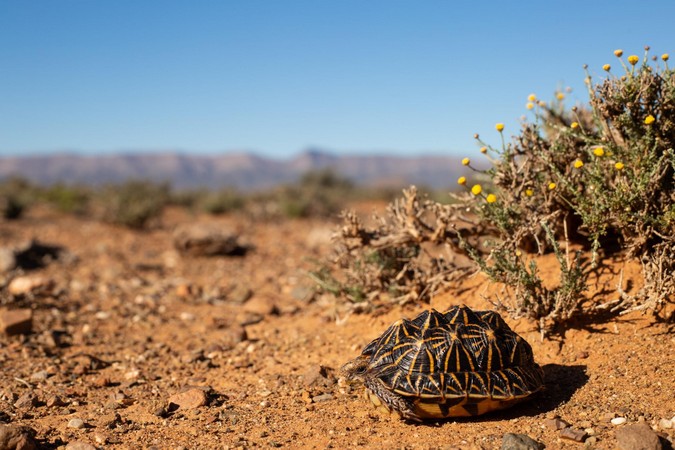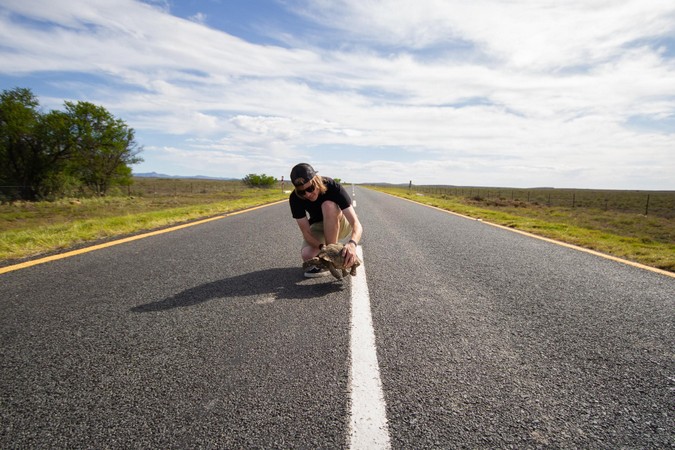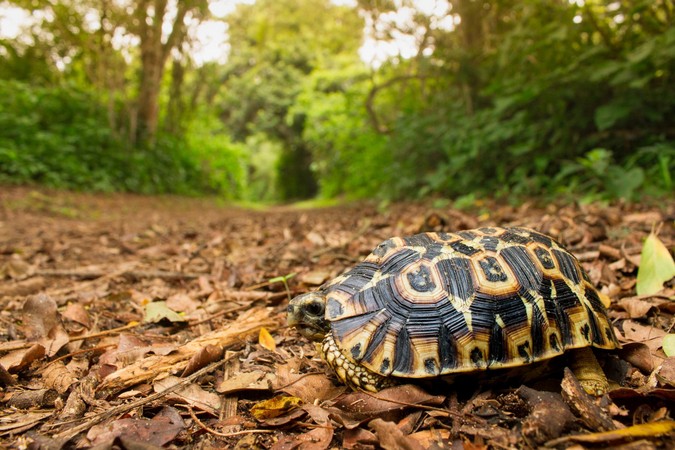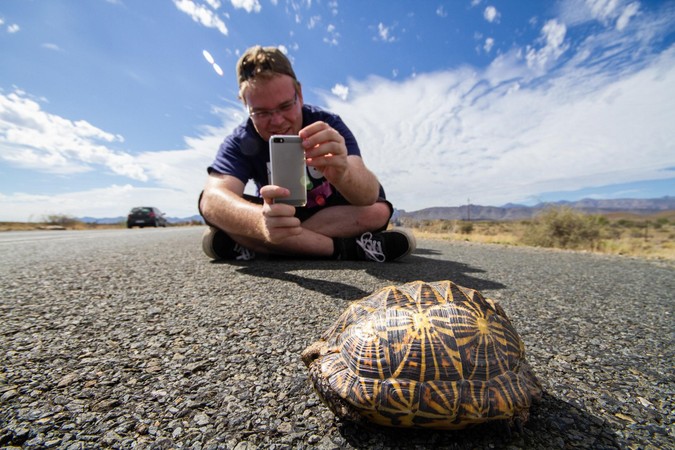
There are countless reasons why tortoises cross the roads, considering how many roads now run through pristine habitat which results in habitat fragmentation. Tortoises may be searching for better grazing land and water, fleeing predators, and even chasing down potential mates. It’s not uncommon to see large tortoises climbing over small wire fences to get where they want to go – believe it or not tortoises really get going when they set their mind to it.
There are around 20 species of tortoises and terrapins that are found across South Africa in almost every conceivable habitat, from the coastal sand forests, fynbos, Albany thicket and right across the dry arid regions of the Karoo and Namaqualand.
South Africa is home to the world’s smallest tortoise, the speckled padloper (Homopus signatus) which average only between 80 – 90mm! These tortoises are classified as ‘Vulnerable’ by the IUCN mainly due to habitat degradation as well as the risk of collection for the illegal wildlife trade. The largest tortoise found in South Africa is the leopard tortoise (Stigmochelys pardalis) which can reach close to half a metre in length and weigh up to 13 kg!
With the December holidays just around the corner, tens of thousands of South Africans will be road-tripping around the country, passing through prime tortoise habitat and arriving at their coastal destinations only to encounter more tortoises.

So why did the tortoise cross the road? One thing we can be sure of it was not to be picked up by a human, put in their car and transported hundreds of kilometres away from its natural habitat to live in a suburban garden alongside the family dog and be fed lettuce leaves and cherry tomatoes…
Due to their enduring nature, tortoises are often picked up when crossing roads and are then saved from the immediate danger of being run over by passing vehicles. However, the problem lies when they are removed from their habitat and transported elsewhere rather than placed on the side of the road that they were heading towards.

Another problem tortoises face is the illegal collection for the pet trade both locally and internationally. It has become a common sight since the 90s to see young men selling tortoises on the roadside towards Sun City in the North West Province. Often motorists with good intentions buy these tortoises with the premise of either releasing them further up the road or taking them home as their new “rescued pet” with the promise of giving these animals a great new life.
Sadly, the initial novelty often soon wears off they are either released into the veld where they often die from lack of a correct food source, become ill from the change in conditions, or they are dumped in one of the several tortoise sanctuaries or reptile parks around South Africa. These facilities can only accommodate so many animals and many are at full capacity, as once removed from their habitat they’re seldom able to be returned to the wild.
Certain species of tortoises are highly prized on the black market, with many overseas tourists coming specifically to collect and smuggle their catch out of the country – many are caught but countless go unnoticed.

All tortoises and terrapins are protected in South Africa and by law cannot be kept with the correct permits issued by the province where the animal was from. You will never be granted a permit to keep a tortoise you happen to pick up in the Western Cape on the road and then bring it back into Gauteng and keep it legally.
So, what do you do if you see a tortoise trying to cross the road? Consider these important points:
• If you are on a relatively quiet road, like a remote dirt road, and the tortoise is not at risk of being run over, then carefully drive around it and let it carry on its way.
• If the tortoise is in danger of being run over, then first and foremost make sure you are safely able to stop your vehicle. A busy road is no place for a tortoise or a stationary car!
• If possible, try not to handle the tortoise – they usually react adversely to being picked up. Though if you need to, then gently pick it up – but be cautious of the mouth as they can bite and may scratch with their feet.
• When picking the tortoise up, keep it horizontal. Using two hands, hold the tortoise firmly on both sides of its body right in front of its back legs. Keep the tortoise in its normal walking position (horizontal). Be aware that tortoises can urinate in fear, and if, in a drought-stricken area, this loss of water can be dangerous or even fatal!
• Do not put the tortoise in your car and drive it to a “better spot”. Rather safely remove it from the road and place it on the side in which he was heading towards, otherwise it will most likely turn around and try to cross the road again!
By all means, when you see a tortoise on the road these holidays stop if you’re able to and make sure it moves off to the side of the road safely, snap some pictures as well if you want, but letting it go on its way is the best thing you can do for them.

To comment on this story: Login (or sign up) to our app here - it's a troll-free safe place 🙂.![]()






